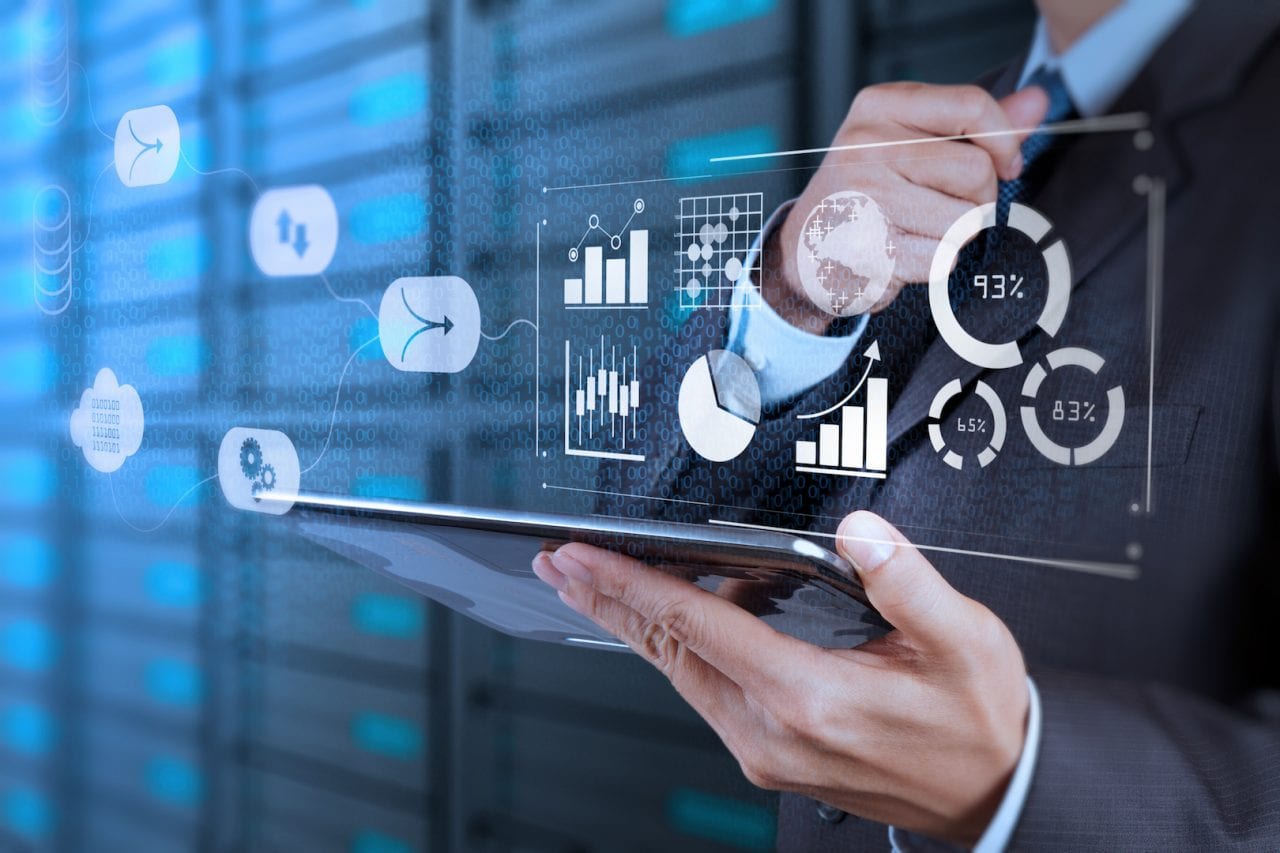The post The POWER Interview: A Marketplace for Energy Collaboration appeared first on POWER Magazine.

The digitization of power generation is among the technology advancements transforming the way electricity is produced and distributed. Utilities have always sought ways to improve the efficiency of their operations, along with lowering the cost of maintenance while streamlining asset management.
The digital transformation has brought numerous challenges, as utilities seek to upgrade their legacy thermal generation while at the same time integrating renewable energy resources into their fleets. The advent of decentralized, distributed power generation also has brought digitization to the forefront, particularly as companies work to improve the quality of the data they’re gathering from their power plants, and figure out how to access and use an ever-larger quantity of information about how their assets are operating.
Awesense, a Vancouver, British Columbia technology group, is among the companies working to help power generators integrate digitization into their operations. The company’s Digital Energy Platform, “a digital twin-based energy analytics platform that allows utilities to scale at the same pace as the rapidly changing technology landscape of the energy grid,” is designed to support energy providers at a time when changing business models have become a constant in the industry. The company says the platform “empowers utilities and energy providers to build data-driven applications and analytics for the energy systems of tomorrow.”
Learn more about asset management systems and software applications to support digitization and distributed power generation at POWER’s Distributed Energy Conference, Oct. 18-21, 2021, in San Antonio, Texas. Register today!
As an example, Awesense and vadimUS, a energy services company that provides ways to integrate renewable energy into commercial, industrial and institutional buildings, earlier this year partnered on a solution that will allow utilities to track the evolution and performance of nanogrid projects in their distribution grid, and monitor real-time performance of their commercial and industrial (C&I) customers’ nanogrids.

Awesense’s CEO, Mischa Steiner, talked with POWER about the company’s technology, including its Awesense Marketplace, which the company launched in early May. The Marketplace is designed to “facilitate collaboration among those in the industry working towards decarbonization in the energy system, and develop solutions that can be easily integrated and scaled by other energy companies.” Several energy groups are taking part in the launch, including Doosan GridTech, Kitu Systems, LO3 Energy, Utilidata, Clir Renewables, Easy SmartGrid, and Athena Power.
The Marketplace uses technologies to provide solutions for asset management, transactive energy, microgrid management, and advanced distribution system management, among others.
“What we need is a new model. A model, very much like the web, where companies collaborate using APIs [application programming interfaces] and tried, tested, and secure software methods,” said Steiner. “There is so much protectionism in the industry, and it needs to stop. Our marketplace is the place to collaborate, and build together. It is clear from the incumbent systems that no one company can bring all the solutions that are needed, let alone rapid decarbonization, so the disruptive companies have chosen to work together to create the change they want to see.”
POWER: What was the thinking behind creating the Awesense Marketplace?
Steiner: The true thinking behind the Marketplace arose from the realization over the previous years that if we are to achieve a decarbonized energy system in the time required to mitigate catastrophic climate change, vendors, utilities and service providers need to collaborate toward that common goal.

Awesense’s shift toward becoming a partner and collaboration-first business model resulted out of the fact that in almost every utility with which we worked, there was duplicated effort occurring across the board. For energy and grid-focused applications and software, many of the same data sources is required for each of them to perform their operations and analytics, however, due to data silos, lack of data visibility and laborious effort requirements on the behalf of the utility, projects were often delayed, pushed out, or simply not taken forward.
The Awesense Marketplace removes the need for this complex integration duplication effort, and provides a common framework via the Awesense Open Energy Data Model for solutions to deploy rapidly. We want to give utilities the ability to test out solutions with limited effort, limited risk, and at a significantly accelerated pace.
POWER: Can you provide information about current use cases for the product?
Steiner: The Marketplace covers a wide range of use-cases by combining partner capabilities and solutions. They range from traditional grid and energy focused use-cases, to modern use-cases focused around DER [distributed energy resources] and EVs [electric vehicles]. Some examples include: DER analytics, DER orchestration and control [distributed energy resource management systems, or DERMS], EV impact assessment, hosting capacity analysis, intelligent asset management, feeder analysis, transformer health analysis, outage analytics, transactive energy, BTM [behind the meter] nanogrid integration, among others. The flexibility the platform provides in order to build and design custom analytics means this list is significantly longer.
POWER: Many companies have asset management systems for equipment used by utilities. What differentiates your product from others?
Steiner: Asset management is only one of the solutions listed on the Marketplace. For example, one of our partners, ENGIN, provides intelligent asset management capabilities through their advanced platform. However, the Marketplace and data model gives utilities the ability to quickly test not only an asset management solution, but also leverage previously integrated data to test a range of other applications and solutions.

POWER: What role does the Marketplace have in decarbonization of the energy sector?
Steiner: One of the primary goals of the Marketplace is to compile solutions that are committed to accelerating the decarbonization of the energy sector. The number of use-cases that could be focused on in the modern energy system from a DER and EV standpoint are endless. Awesense provides the digital layer with which vendor solutions can easily connect to the critical data they need for their solutions to operate optimally. Awesense brings together solutions like Doosan GridTech’s DERO DERMS solution, which can control and orchestrate DER devices at scale. Kitu’s Azimuth communication platform leverages its IP to access data from previously inaccessible data sources in the grid, which then feeds that data into the Awesense data model. Easy Smart Grid may utilize Awesense-ingested and processed data to make informed demand response control decisions on devices being controlled.
POWER: How does the Marketplace support transactive energy?
Steiner: LO3’s Pando, a transactive energy solution, can leverage the Awesense data model to access consumption and metering data from participants in its energy marketplace, in which producers and purchasers of renewable energy can exchange energy and currency to pay for renewably-produced energy.
POWER: How can the Marketplace be used in the management of microgrids?
Steiner: Heila, a partner solution soon to be released on the Marketplace, is a microgrid controller system which can leverage data from the Awesense data model to determine optimal management configurations for microgrids. The Awesense engine can also perform analysis on performance of the microgrids, compare performance when islanded versus when connected to the primary grid, among other things.
POWER: Can you talk about the product’s role in managing an advanced distribution system?
Steiner: The Marketplace is all about bringing best-in-class solutions together to optimally manage the energy system of the future. Where certain capabilities are not available with a single vendor, the Marketplace and its common framework can easily integrate solutions to fill gaps and solve issues. It takes a collaborative approach to accelerating the deployment of vendor solutions, reducing integration times, and limiting risk. We operate under the mentality of “think big, test small, move fast.”
POWER: Everyone talks about the economics of power generation. You mentioned how the Marketplace can open new revenue streams. Can you provide some specifics about that? Are we talking about supporting new business models for utilities, and/or the rollout of new products for customers?
Steiner: There are multiple ways the Marketplace opens up new revenue streams. Both of the examples provided are correct. Many of the solutions in the marketplace, such as LO3’s Pando, and vadimUS’s vadiMAP solution, are customer-facing white-labeled solutions that the utility can offer as a service. In both cases the utility can offer the capabilities as a service to their customers, charging them for the usage on a per-customer basis.
As a second example, and as I alluded to before, the flexibility which Awesense provides is the ability to test, design and reproduce applications, analytics and solutions built on top of the Awesense data model. If a utility or partner creates a solution built using this data model, it can easily be transported across any customer whose data is also integrated into the Awesense data model. In this case Awesense acts as a product builder for the organization, and the Marketplace and common framework gives them the ability to reproduce it in other jurisdictions and service territories. We give our customers and partners the ability to post their developed solutions on the Marketplace, which can then be purchased from them by other utilities. This gives the ability to diversify revenue streams by developing products and reselling them at an arbitrary price.
—Darrell Proctor is associate editor for POWER (@POWERmagazine).
The post The POWER Interview: A Marketplace for Energy Collaboration appeared first on POWER Magazine.